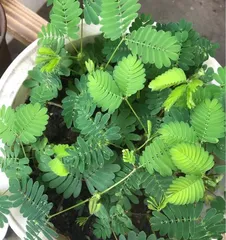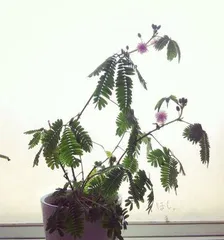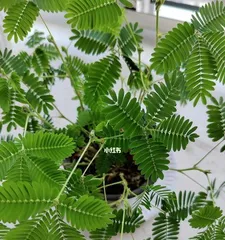Mimosa is a common ornamental plant whose unique flowering method has attracted the attention of many plant enthusiasts. However, many people don't know the flowering time and maintenance methods of mimosa, leading to unstable blooming periods or inability to produce more flowers. This article will introduce you to the flowering time and maintenance methods of mimosa, hoping it will be helpful to you.

I. Mimosa Flowering Time
Mimosa is a short-day plant that requires shorter daylight hours to flower. Generally, mimosa easily blooms during the short daylight seasons of autumn and winter. In the Northern Hemisphere, mimosa typically blooms from October to February; while in the Southern Hemisphere, it's from April to August.
II. Mimosa Maintenance Methods
1. Soil must have good drainage

Mimosa prefers moist soil, but excessive moisture can cause root rot, so the soil needs good drainage. You can add some sand or perlite to the soil to increase air permeability and drainage.
2. Maintain appropriate temperature
The optimal growth temperature for mimosa is 18°C-25°C. Temperatures that are too high or too low will adversely affect the growth of mimosa. Especially in winter, pay attention to preventing mimosa from freezing.

3. Fertilize appropriately
Mimosa doesn't like over-fertilization. Excessive nutrients can cause the plant to grow too vigorously and affect flowering. It's recommended to apply general-purpose fertilizer once a month during spring and summer.
4. Likes light
Mimosa needs sufficient light to grow vigorously, but intense sunlight can scorch the leaves. During strong summer sun, you can place mimosa in partial shade.
5. Remove dead leaves promptly
Mimosa leaves are easily blown off by wind and tend to turn yellow and fall off, requiring timely cleaning. At the same time, removing dead leaves also helps with ventilation and light exposure for the plant, promoting healthy growth.
6. Keep the air humid
Mimosa likes a humid environment, so you need to maintain humidity. You can spray water or place mimosa near a humidifier to create a more suitable growing environment.
7. Pay attention to prevent pests and diseases
Mimosa is susceptible to powdery mildew, black spot disease, aphids, and other pests and diseases, so prevention is important during regular maintenance. You can use non-toxic botanical pesticides for spraying, or employ natural pest control methods using plants.
8. Prune timely
Mimosa grows relatively fast and tends to form overly dense branches and leaves. Pruning the plant appropriately during the growing season maintains a neat shape and promotes flowering. But be careful not to prune excessively, as this may affect flowering.
Conclusion: Mimosa is a beautiful and ornamental plant, but to make it bloom more, we need to give it patient care. Only under appropriate conditions of temperature, humidity, light, and fertilizer can mimosa thrive and produce its most beautiful flowers. We hope this article brings you some help, allowing your mimosa to grow healthier and more beautiful.
<|end_of_box|>